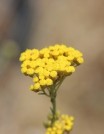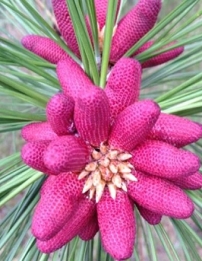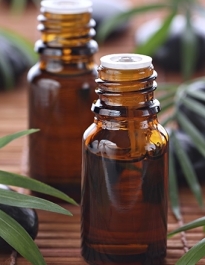The Beauty and Power of Essential Oils –Part 2 – Respect For The Environment
Blog
The Beauty and Power of Essential Oils – Part 1 – Respect For Our Bodies
The Beauty and Power of Essential Oils – Part 1 – Respect For Our Bodies
Sometimes, it is easy to think that all we need to do as we travel the road to natural health and wellness is to buy and use “natural products” and to believe someone else has ensured that these products are what they say and they are safe for us to use. What is really means is that we have to take a much more active role in our health and wellbeing than ever. The Aromatherapy industry has grown in leaps and bounds and essential oils are now available almost anywhere. That is both the good and the bad news. At this time there is very little regulation on the quality of aromatherapy products worldwide. Consequently, claims can be untruthful and that can be scary. This is not a comforting thought since we choose to use essential oils to improve our wellbeing.
The subtitle of this article is “Respect” and respecting both the power and beauty of essential oils and aromatherapy means that we view our bodies as the temples that they are.
RESPECT FOR ESSENTIAL OILS EQUALS RESPECT FOR OUR BODIES
Staying safe – more is not necessarily better!
- When referring to essential oils as powerful I am talking about how concentrated they are. I recommend using as little as possible to provide you the support and relief you desire. Remember, the act of using essential oils means we are attempting to reduce synthetic chemicals and eliminate toxic substances from our bodies and replace them with natural substances. While it may be impossible to avoid all synthetic chemicals in our lives we do need to remember that essential oils are still chemicals, albeit natural, and they can be very strong.
Remember that we are all unique!
- Consequently we all react differently. What works for one will not necessary be good for another. We can see this in how differently we react to the aroma of an essential oil; in how the oils impact our emotion and energy; in how some of us have sensitivities or allergic reactions; and, even how our immune systems differ. One size does not fit us all…. nor does one oil or oil blend.
- Essential oils can react with other medications we are taking. They can either suppress or potentiate the affect and in either case that could spell trouble.
- Being pregnant or breastfeeding puts you in a special category, which requires avoiding certain oils during those times.
- Aromatherapy for babies and young children is also very specific. I recommend sticking to hydrosols for babies (hydrosols are byproducts of the plant distillation process and therefore have similar properties to essential oils but are much less concentrated). For children under 12 years of age there are special dilution guidelines and recommended substitutions for some oils.
Stick to Quality products – You generally get what you pay for!
- As mentioned above, regulation is minimal, so buy from reputable sources. At a minimum this information should be provided: the Latin plant name, extraction method, is the oil organic, are instructions and contraindications listed.
This can be overwhelming, and I didn’t write this to scare you but I did want to get your attention and I hope I did. Treat your body with respect and choose to educate yourself and/or seek the advice of a certified aromatherapist or trained clinical practitioner. It would be a real shame that in the name of natural health and wellbeing we revert to substandard products that may have been diluted, or adulterated and end up hurting ourselves in the process.
Stay tuned for my next blog: Part 2 on the Beauty and Power of Essential Oils. It will focus on Respect for the Environment and the Growers and what this means for us as we continue to reap the benefits of essential oil aromatherapy.
Using Essential Oils To Protect Yourself From Cold and Flu
A Litle About Essential Oil Chemistry
“DID YOU KNOW” A Little About Essential Oil Chemistry
Essential oil chemicals are naturally found within the plants. These chemicals are what give the oils their aroma and their natural therapeutic effects. I love the way that Aromahead Institute defines essential oils from a chemistry perspective:
“An essential oil is a collection of many molecules, and is made up primarily of carbon, oxygen and hydrogen. Every essential oil has a unique set of carbon compound ingredients. For example, the ingredients of Rose oil are different than the ones in Pine. When you smell Rose or Pine oil, what you are actually smelling – the substance that enters your nose – is a unique set of carbon compounds that your brain has learned to identify as the scent of “Rose” or “Pine”.”
Constantly Changing
Essential oils, while in the plant, are constantly changing their chemical composition. This happens so that the plant can adapt to the ever-changing environment.
Scientific research has shown that plants produce essential oils for a variety of purposes:
- to attract pollinators
- as defense against insects and other animals
- for protection of the plant due to their antibacterial and antifungal nature
- to keep away other plants competing for nutrients
As a consequence of these changes, even the same plant growing in the same area can produce different essential oils from year to year. Other factors that contribute to this adaptation of essential oil chemical components are weather, time of harvesting, and oil extraction method used. Why bring any of this up? The answer is that these differences mean that the percentages of chemical components in the plant might change and the aroma of the oil may be different. Chemical component changes may change the natural therapeutic effect desired. Have you ever noticed how oils from different sources and even the same sources year to year may smell different?
A good example is Helichrysum from Corsica is rich in specific esters that are strong antispasmodics. Helichrysum from Croatia has almost no esters but is rich in sesquiterpenes and ketones known for healing damaged skin. Looking at the two pictures below we would not see these differences, but they are definitely there from a therapeutic and aromatic perspective.
Helichrysum from Corsica 
 Helichrysum from Croatia
Helichrysum from Croatia
How do we know what we are really getting when we buy an essential oil?
The best way to assure the quality and purity of the oil is with what is called GC/MS testing. (Gas Chromatography/Mass Spectrometry.) Don’t get lost in these big terms. But, expect that your supplier of essential oils perform these tests because the therapeutic benefits and safety issues of essential oils are primarily determined by their chemical makeup. The testing can also determine if the oil has been adulterated in any way.
Looking back at the above Helichrysum example, the only way that we can know exactly what is in an oil is by GC/MS testing so that we can know more clearly what the best natural therapeutic use of the oil will be. Are we looking for a skin healing solution or an antispasmodic? Essential oil suppliers should have GC/MS testing sheets available for you when you purchase an oil from them.
There is so very much more to the subject of essential oils and chemistry. If you are an Aromatherapist you will have been exposed to much of it. If you are not an Aromatherapist maybe now you will want to explore the art and science or aromatherapy just a little bit more.
Welcome to 50clarke and to Today’s World of Aromatherapy
Introducing “DID YOU KNOW”
Welcome to 50clarke and to today’s world of Aromatherapy.
These days it is difficult to ignore just how much information is available about essential oils and their benefit to our well being. That is fantastic, but it can also be overwhelming at times. Aromatherapy is indeed an ancient practice that time and again has proven to support vitality and health. In modern times, results from research have added yet another layer of proof to substantiate this power, so its no surprise that everywhere we look there are articles and products from which we can both learn and find comfort and support. How do we sort through this information? Where do we start? Are there safety concerns? What about product quality? Can we use essential oils to “FIX” everything? Who can I trust? There can be more questions than answers.
Aromatherapy as Art and Science


The National Association for Holistic Aromatherapy (NAHA) defines essential oil therapy as “the art and science of utilizing naturally extracted aromatic essences from plants to balance, harmonize and promote the health of body, mind and spirit.” Understanding aromatherapy as both an art and a science helps us to be better prepared to answer questions. Creating or using blends that you love and that also address your emotional and physical concerns feels fantastic. We all want to feel fantastic. Here’s the answer to the above question ”Can we use essential oils to “FIX” everything?” NO we can’t, BUT essential oils are supportive for such a wide range of issues. Consider these three concerns that so many of us deal with: sleep problems, stress, and pain. Just these three alone can lead to healing if essential oils are used as support. Who wouldn’t want that! This nicely summarizes why there is a hunger for what aromatherapy has to offer and why we all want to find what can work for us.
Blending of several essential oils to address these and other concerns is also an art and a science. Blending is done from a number of perspectives as follows: Chemical family, Chemical component, Aroma, Plant Part and Intuition. Let the fun Begin!
I will elaborate on these blending perspectives in the next series of DID YOU KNOW articles.
50clarke Blog
